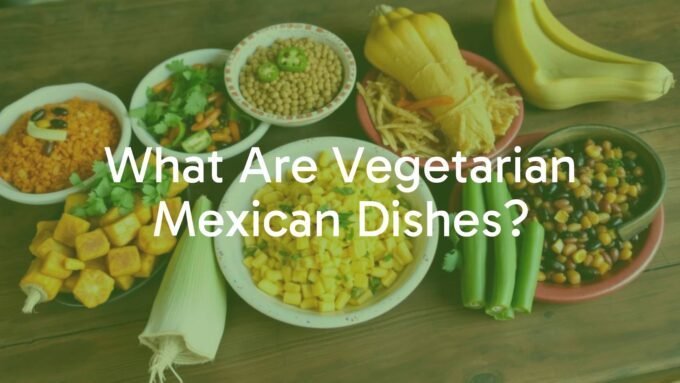Mexican tacos and salsas are a rich food tradition filled with color, taste, and aroma. At their core, a taco is simple: a warm tortilla holding a savory filling, finished with salsa. Salsas are central to Mexican cooking and bring a wide range of flavors-from bright and tangy to smoky and very spicy-each one made to match the filling. Together, tacos and salsas form a classic pair, a staple at Mexican tables and a favorite around the world.
This guide explains what tacos and salsas are, their most loved styles, and how they work together. From busy city stands to home kitchens, you’ll learn how to make and serve them with clear tips on ingredients, cooking, and serving so your tacos taste real and delicious.

What Are Mexican Tacos and Salsas?
Defining Traditional Mexican Tacos
Traditional Mexican tacos are simple to build yet full of flavor. They use a soft corn or wheat tortilla, filled, then folded or rolled. Unlike hard-shell versions with lots of cheese, classic tacos focus on fresh fillings and warm, flexible tortillas.
Tacos are flexible. Fillings include grilled meats like carne asada or al pastor, slow-cooked barbacoa or carnitas, seafood, or vegetables and beans. Many are topped with chopped onion, cilantro, and salsa. The tortilla matters too: a good corn tortilla adds gentle corn taste and a soft bite that matches the filling.
Overview of Classic Mexican Salsas
Salsa means “sauce” in Spanish, and it covers a wide mix of fresh, cooked, and blended sauces. Each one brings its own heat, acid, sweetness, and savory notes. They are more than condiments-they shape the taste of the meal.
From fresh pico de gallo to smoky salsa roja or tangy salsa verde, salsas use chilies, tomatoes or tomatillos, onions, garlic, cilantro, and lime juice. Some are roasted, some are boiled or fried, and some are mixed fresh. People often pick a salsa that fits the filling, making a balanced bite.
Popular Types of Mexican Tacos
Tacos al Pastor
Tacos al Pastor come from a mix of Mexican and Lebanese food traditions. Pork is marinated with chilies, spices, and often pineapple, then stacked on a vertical spit called a trompo. As it turns, the meat cooks tender with crispy edges. Thin slices go onto warm tortillas with onion, cilantro, and a bit of fresh pineapple. The sweet-salty mix with a touch of spice makes al pastor a favorite. A spicy salsa taquera cuts through the rich pork.
Tacos de Carnitas
From Michoacán, carnitas are slow-cooked pork. Large pieces simmer in lard (or oil and water) for hours until very tender, then cooked hotter to crisp the edges. You get soft meat with crunchy bits, rich and savory. Serve on corn tortillas with cilantro, diced white onion, and your choice of salsa, from mild to hot, so the pork flavor stands out.
Tacos de Barbacoa
Barbacoa is usually lamb or goat (beef is common too) cooked very slowly, often in a pit, until tender and smoky. Seasonings may include spices, garlic, and maguey leaves for an earthy taste. The meat shreds easily. Tacos are topped with cilantro and onion and often served with the cooking broth (consomé). Deep, savory, and satisfying, barbacoa is a classic choice.
Tacos de Pescado (Fish Tacos)
From Baja California, fish tacos feature battered and fried or grilled white fish in corn or flour tortillas. Toppings often include shredded cabbage, a creamy white sauce (a mayo-based crema), and lime juice. The mix of crispy or flaky fish, crunchy cabbage, and tangy sauce makes a light, bright taco-great on warm days. These are now a regular part of the larger taco scene.

Vegan and Vegetarian Taco Options
Tacos work great for vegan and vegetarian eaters. Go beyond beans and cheese with fillings like roasted peppers, onions, and zucchini; spiced mushrooms; sweet potatoes; jackfruit (for a pulled texture); soy chorizo; or nopales (cactus). Top with avocado, salsa (from mild pico to smoky chipotle), and lime. These tacos show you can get big flavor without meat.
Types of Mexican Salsas for Tacos
Salsa Roja (Red Salsa)
Salsa roja covers many red sauces made with tomatoes and red chilies like guajillo, ancho, or arbol. Ingredients may be roasted, boiled, or fried, each method giving a different taste. A common version blends roasted tomatoes, onion, garlic, and a jalapeño or serrano, then simmers so flavors come together. It ranges from mild to very spicy, smooth to chunky, and works with chips and all kinds of tacos.
Salsa Verde (Green Salsa)
Salsa verde uses tomatillos, which add tart, slightly sweet flavor. Green chilies like serranos or jalapeños bring heat and the bright color. Roasting adds a smoky taste; boiling keeps it fresher and brighter. Onion, garlic, and cilantro are common add-ins. Salsa verde is great with pork dishes like carnitas and with many tacos. Its tang cuts through rich fillings.
Pico de Gallo (Fresh Salsa)
Pico de gallo is uncooked and chunky. It mixes diced ripe tomatoes, white onion, cilantro, fresh serrano or jalapeño, lime juice, salt, and sometimes a little dried oregano or cumin. It tastes best fresh, since it softens after a few days in the fridge. With little liquid, it’s like a relish-perfect for chips or as a bright, fresh topping for any taco.
Salsa Taquera (Taqueria-Style Salsa)
Salsa taquera is common at taco stands. This red or orange salsa is made to go with tacos and often uses dried Chiles de Arbol for strong heat, plus tomatoes, garlic, salt, and water. Some versions, like the one by Mely Martínez, add tomatillos for tang and a different color. Ingredients are usually roasted or fried, then blended smooth. Heat can be adjusted by using more or fewer arbol chilies. It pairs well with al pastor, adding a sharp kick that balances the pork.

Guacamole and Creamy Salsas
Guacamole acts like a salsa topping. It’s made from ripe avocados mashed with lime juice, cilantro, onion, and sometimes jalapeño or serrano. It brings a rich, creamy texture and fresh taste. There are also creamy salsas made with avocado, crema, or nuts blended with chilies and aromatics. These are milder and cool the heat of spicy fillings while adding a smooth texture.
The Role of Salsa in Authentic Mexican Tacos
Why Salsas Matter for Flavor and Tradition
In authentic Mexican tacos, salsa is not an afterthought-it’s part of the core. It ties tortilla and filling together and adds layers of taste: heat, acid to cut richness, a touch of sweetness, and depth that turns a simple combo into something special.
Salsas are part of family and regional cooking. Many households have their own recipes passed down over time. People choose chilies with care, roast vegetables to bring out smoky taste, and balance lime and salt with practice. Without salsa, even a well-made taco feels unfinished. Salsa adds spark, contrast, and the bright hit that defines the dish.
Choosing the Right Salsa for Your Taco
Match your salsa to the filling so the flavors work together. Rich meats like carnitas or barbacoa do well with bright salsa verde or fresh pico de gallo to lighten each bite. Tomatillos or fresh tomatoes with lime wake up the palate.
Grilled meats like carne asada or sweet-savory al pastor pair nicely with smoky, spicy salsa roja or salsa taquera. Fish tacos, which are lighter, often work best with a creamy mild salsa or pico de gallo, sometimes with avocado for extra richness. Try different combos-many taco spots offer several salsas so you can mix and match.
| Taco filling | Good salsa picks |
|---|---|
| Carnitas, Barbacoa | Salsa verde, Pico de gallo |
| Carne asada, Al pastor | Salsa roja, Salsa taquera |
| Fish tacos | Creamy avocado salsa, Pico de gallo |
| Veggie or vegan tacos | Pico de gallo, Salsa verde, Chipotle salsa |
How To Make and Serve Mexican Salsas
Key Ingredients for Classic Salsas
Most classic salsas use a small set of ingredients:
- Tomatoes or tomatillos: body and acidity or sweetness
- Chilies: heat and flavor (fresh serrano, jalapeño; dried ancho, guajillo, arbol)
- Onion and garlic: aroma and depth
- Cilantro: fresh, herbal note
- Lime juice: acid that brightens the taste
- Salt: brings flavors forward
- Optional: a pinch of dried oregano or cumin for an earthy touch
Preparation Steps for Popular Salsas
Methods vary by salsa and the texture you want. For deeper flavors, roasting works well. Place tomatoes or tomatillos, onion, garlic, and chilies on a hot griddle, comal, or in the oven until blistered and lightly charred. This browns natural sugars and adds smoke. For salsa taquera, quickly toast dried arbol chilies so they do not turn bitter, then roast the tomatoes, tomatillos, and garlic. Blend with water and salt to a smooth or chunky texture.
For brighter taste, boil tomatillos and chilies for some salsa verdes. For fresh salsas like pico de gallo, dice and mix without cooking. After blending or mixing, some salsas taste better with a short simmer so the flavors come together, like salsa roja simmered 15-20 minutes. The goal is to pull the most flavor from each ingredient and combine them well.
Tips for Balancing Spice and Freshness
- To control heat: use fewer chilies or milder ones like jalapeños; remove seeds and membranes to lower heat. For more spice, use serranos or Chiles de Arbol and keep some seeds.
- Taste a tiny piece of a fresh chili before using; heat levels vary a lot.
- If it’s too hot: add more tomatoes or tomatillos, a bit more lime, or some avocado for creaminess.
- To keep it fresh: use ripe produce, fresh cilantro, and fresh-squeezed lime juice.
- For chunky salsas like pico, crisp vegetables matter. Letting the mix sit for about an hour helps flavors blend without losing snap.
- Taste and adjust as you go so the salsa is lively and balanced.
Storage and Shelf Life of Homemade Salsas
Fresh, uncooked salsas like pico de gallo last about 3-5 days in the fridge. They lose crunch and bright flavor with time, and cilantro can wilt.
Cooked salsas like salsa roja or salsa taquera keep longer. Store in airtight containers in the fridge for up to a week, sometimes up to two if the acid is higher with extra lime or a bit of vinegar. Smooth, cooked salsas often freeze well. Salsa taquera can be frozen for a couple of weeks and kept up to 3 months in freezer-safe containers. Thaw in the fridge and stir before serving. Chunky salsas do not freeze as well and can turn watery after thawing.
Building the Perfect Mexican Taco
Selecting the Right Tortilla
The tortilla is the base of a great taco. Corn tortillas are the standard for street tacos. They bring a gentle corn flavor and a soft bite that holds fillings well. Use fresh, soft corn tortillas made from masa harina and warm them on a comal or dry skillet (or steam briefly) so they bend without tearing. Small, street-size tortillas are nice for a few bites so you can try more than one taco. Flour tortillas are common in northern Mexico and for some tacos (like some fish tacos). They are milder and chewier and can be a good pick if you like them.
Meats, Vegetables, and Toppings
Pick your filling next. Choices include al pastor, carnitas, barbacoa, grilled carne asada, or seafood like grilled or battered fish. For vegetarian or vegan tacos, try roasted vegetables, spiced mushrooms, jackfruit, or hearty beans.
Toppings matter. Chopped white onion and cilantro show up often and add bite and freshness. A squeeze of lime lifts all flavors. You can add sliced radishes for crunch, pickled red onions for tang, or avocado or guacamole for creaminess. Together, they make each bite complete and satisfying.
Assembling and Serving Suggestions
Warm the tortilla so it bends easily and tastes better. Add a modest amount of filling in the center so you can fold and eat by hand. Sprinkle onion and cilantro, add radish slices if you like, then spoon on salsa so every bite has good flavor. Finish with lime.
Serve tacos right away to keep tortillas warm and toppings fresh. Put out several salsas with different heat levels so everyone can build their own. Tacos are eaten by hand; tilt your head slightly to keep fillings in. They fit casual meals, family dinners, and snacks. Set out extra lime wedges and napkins-tacos are fun, a bit messy, and very tasty.
Tips for Enjoying Mexican Tacos and Salsas at Home
Sourcing Authentic Ingredients
Good ingredients make a big difference. For tortillas, look for fresh corn tortillas from a tortillería or quality brands made with masa harina. Skip hard shells if you want a classic style. For chilies, visit Mexican markets or the international aisle for fresh serranos and jalapeños, and dried arbol, guajillo, and ancho. Buy ripe tomatoes, firm tomatillos, crisp white onions, and fresh cilantro. Keep plenty of limes; their juice adds bright flavor. For meat, choose cuts that work well for slow cooking (pork shoulder for carnitas) or grilling (skirt steak for carne asada). The effort you put into finding good ingredients will pay off in the taste.
Creating a Taco Night at Home
A taco night is a fun, hands-on way to share a meal. Make fillings ahead-slow-cooked meats and many salsas keep well. Offer a mix of fillings, including a vegetarian choice. Set up a taco bar with warm tortillas, bowls of fillings, and toppings like onion, cilantro, radishes, avocado or guacamole, and several salsas from mild to hot. Include pico de gallo, a smoky salsa roja, and a tangy salsa verde. Add lots of lime wedges. Let guests build their own tacos and try different mixes. It’s social, tasty, and memorable.

Common Questions About Mexican Tacos and Salsas
Are Mexican Tacos Always Spicy?
No. The filling may be rich and savory without heat; spice usually comes from the salsa. Heat levels range from mild to very hot. Pico de gallo can be mild if you use fewer or milder chilies or remove seeds and membranes. Salsa roja can be made gentle by using milder peppers or more tomatoes.
You control heat by choosing your salsa. Pick mild salsas if you prefer less spice. Many places offer several options so everyone can get the level they like. You can find very spicy tacos, but you can also enjoy tacos full of flavor without much heat.
Can Mexican Salsas Be Frozen?
Yes, many cooked, blended salsas freeze well. Salsa roja and salsa taquera usually hold up after freezing because cooking stabilizes them. Mely Martínez notes her salsa taquera freezes well for a couple of weeks and can be kept up to three months in a freezer-safe container. Freezing lets you make bigger batches and use them later.
Fresh salsas like pico de gallo do not freeze well. Raw tomatoes and onions have a lot of water and turn soft and watery after thawing. The flavor may remain, but the crisp texture is lost. If you plan to freeze salsa, stick to cooked, smooth types. Store in airtight, freezer-safe containers or bags, thaw in the fridge, and stir before serving.














Leave a comment